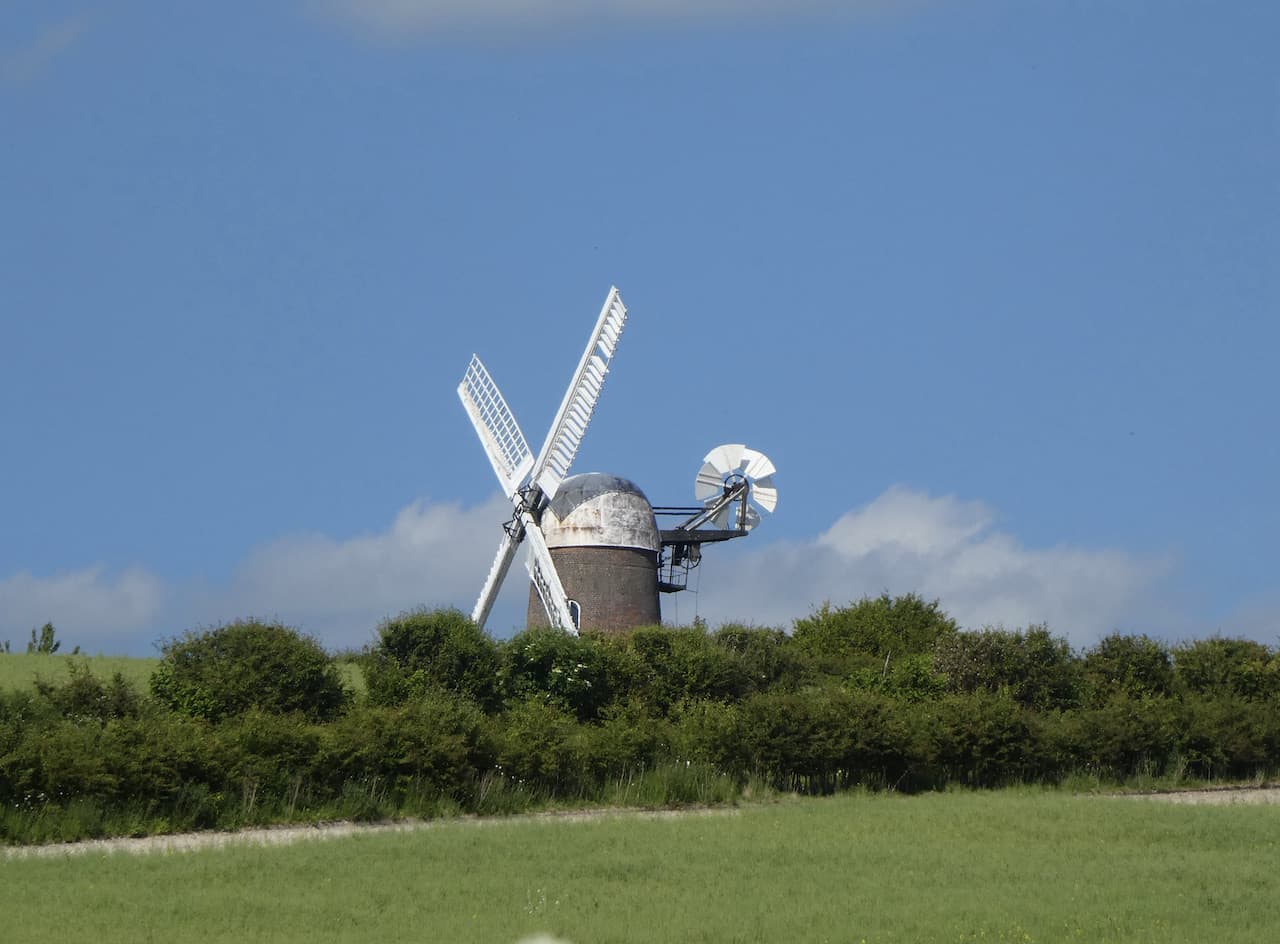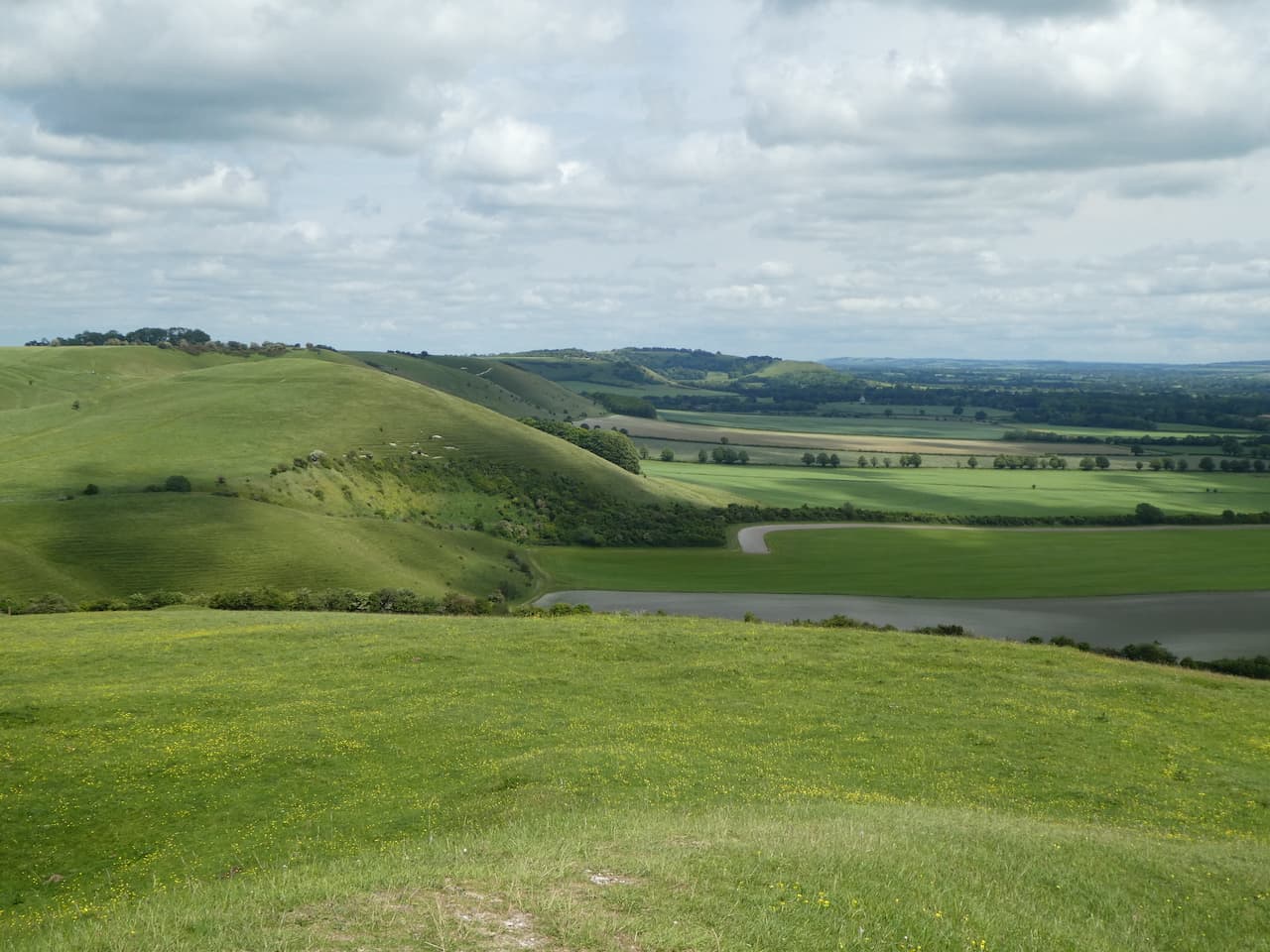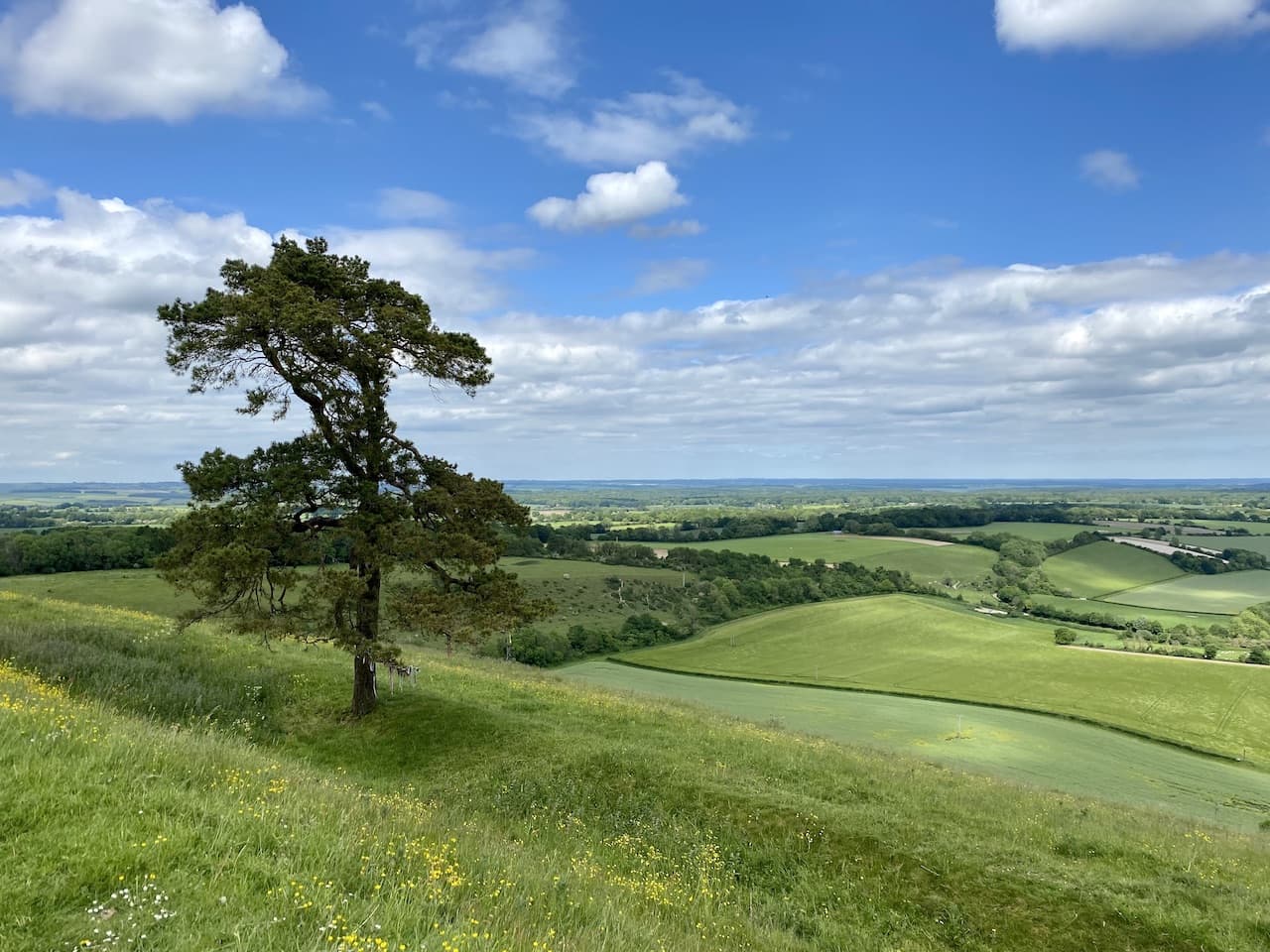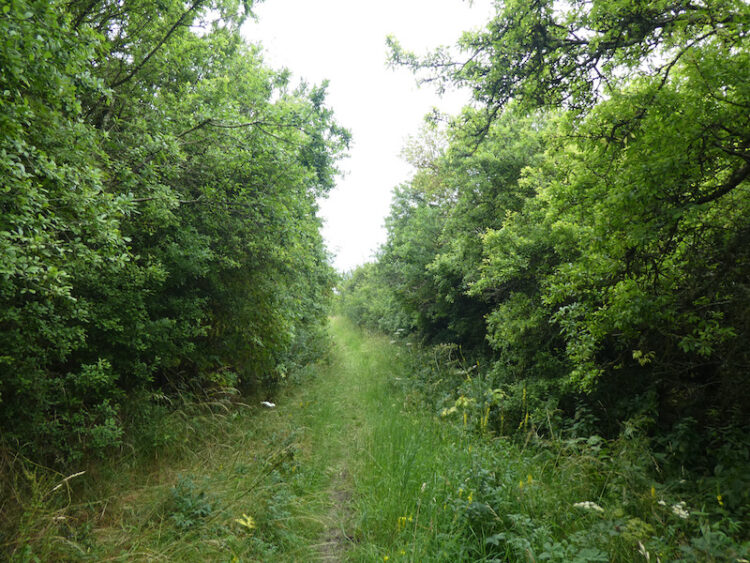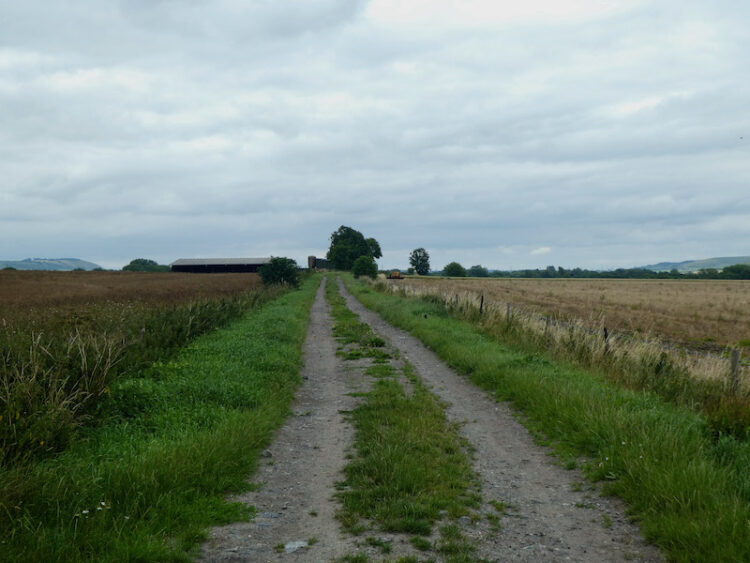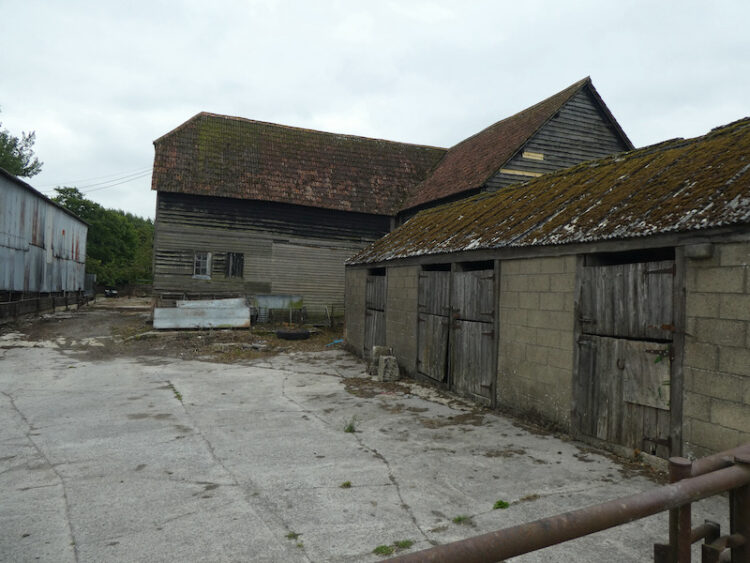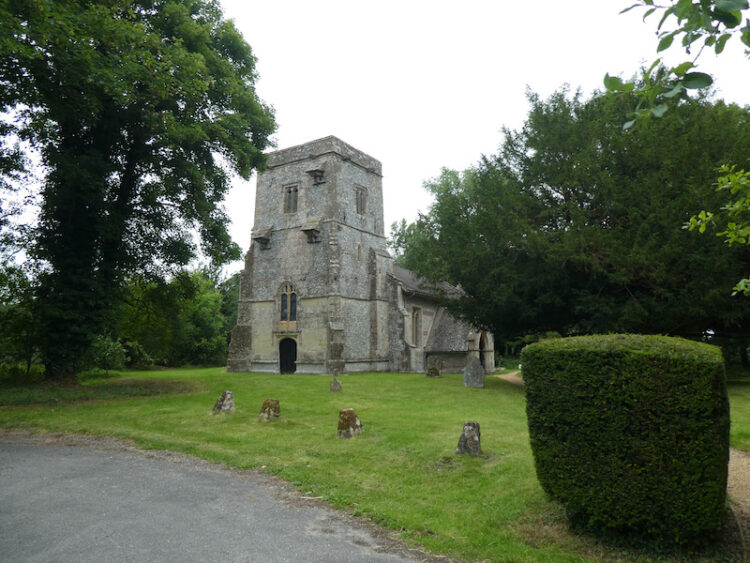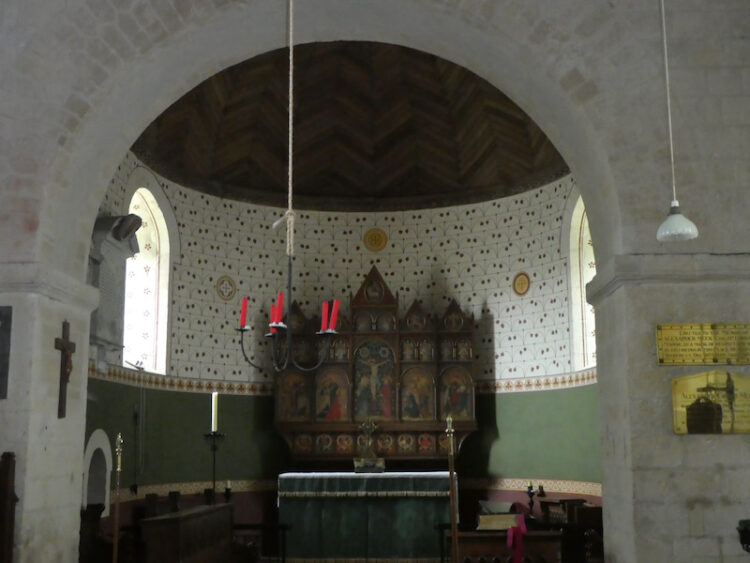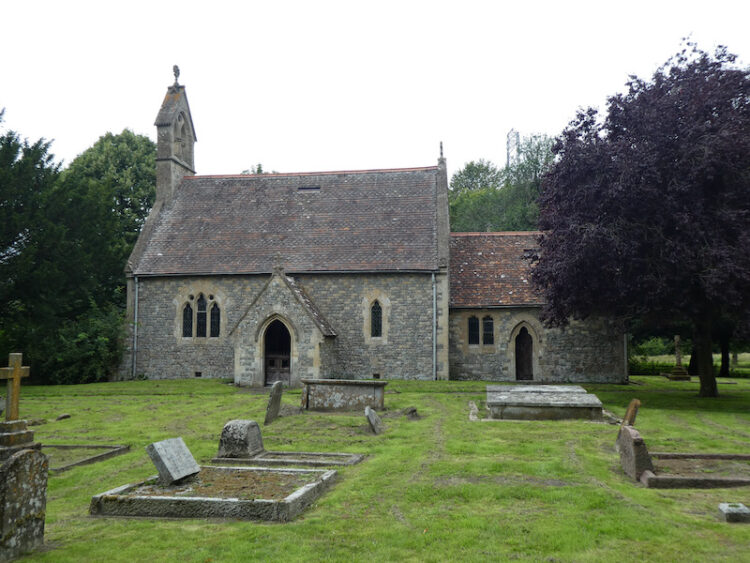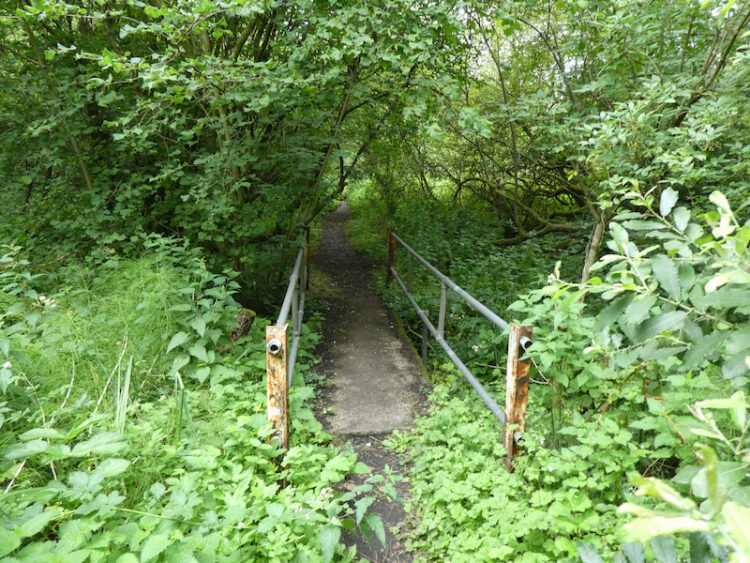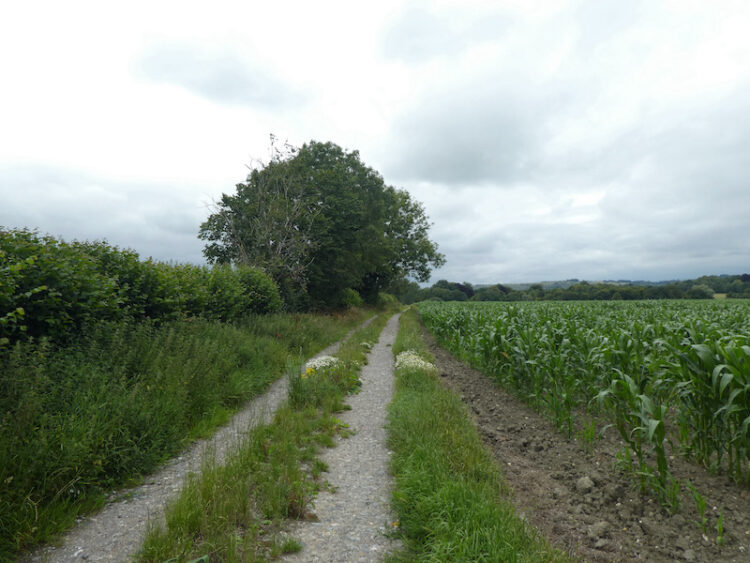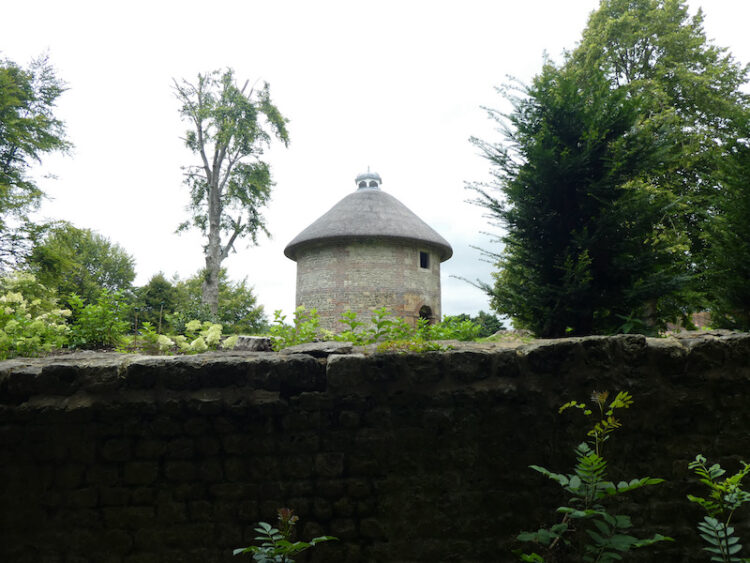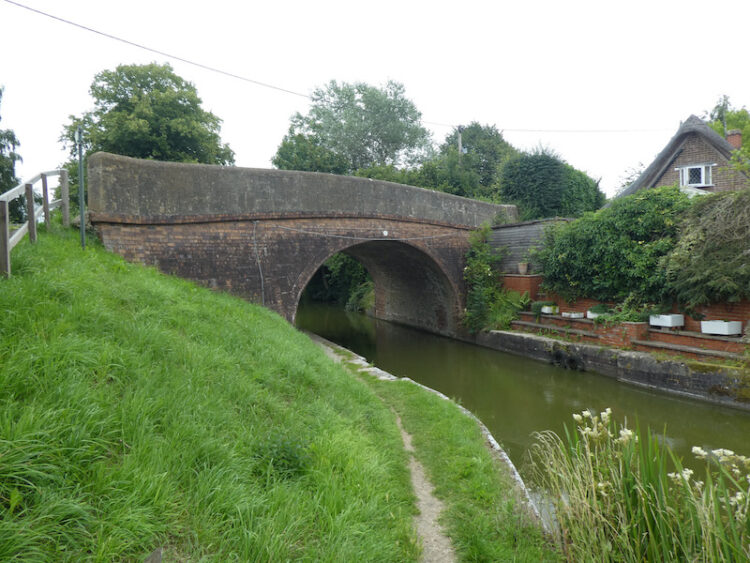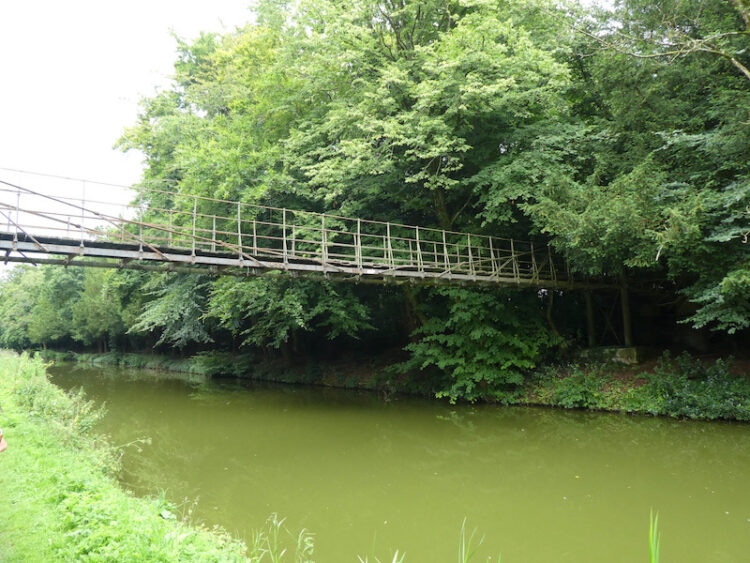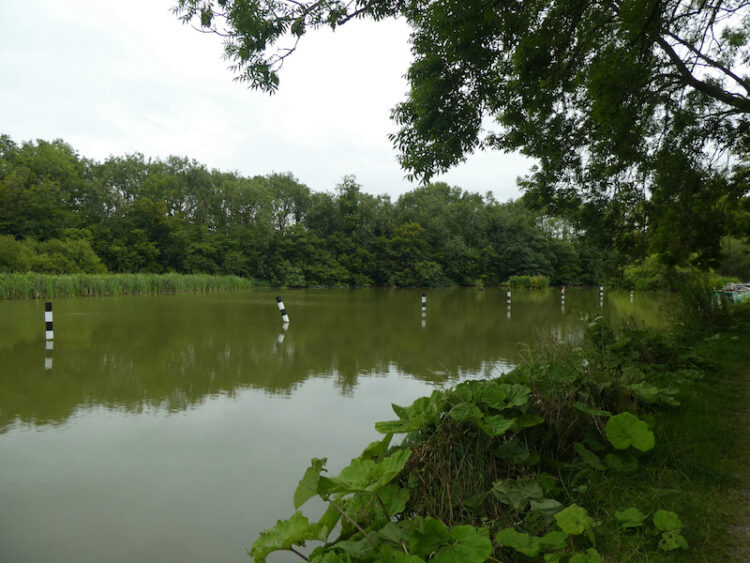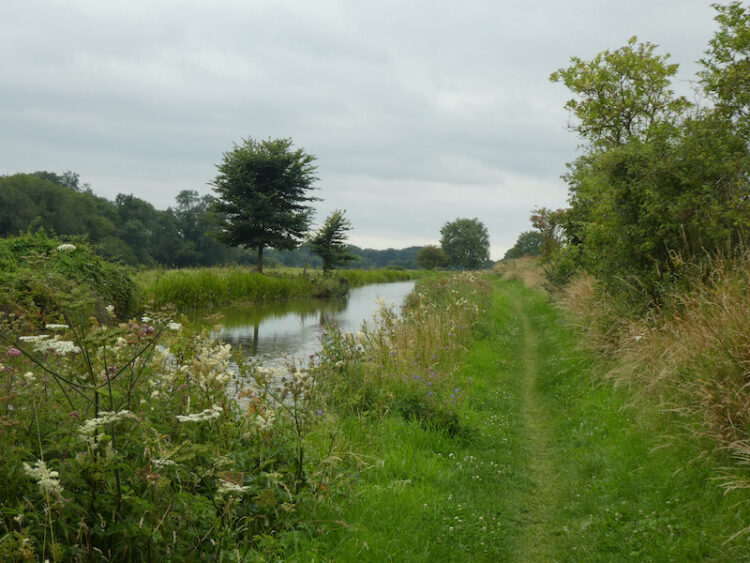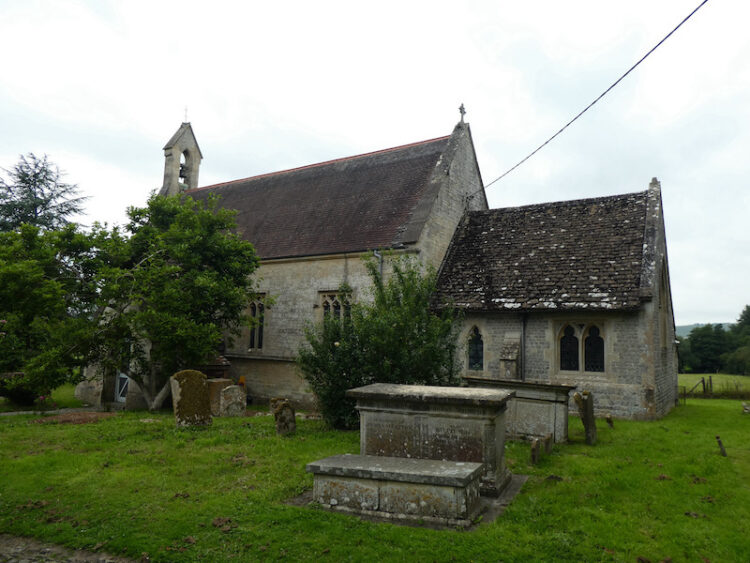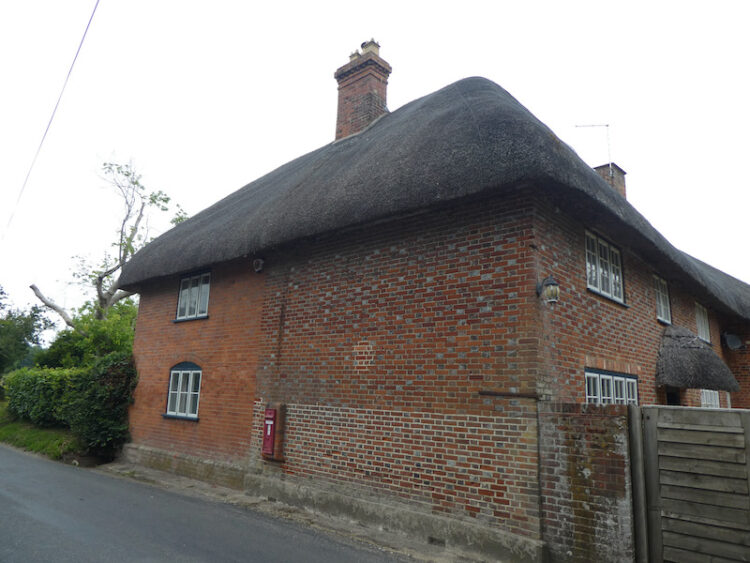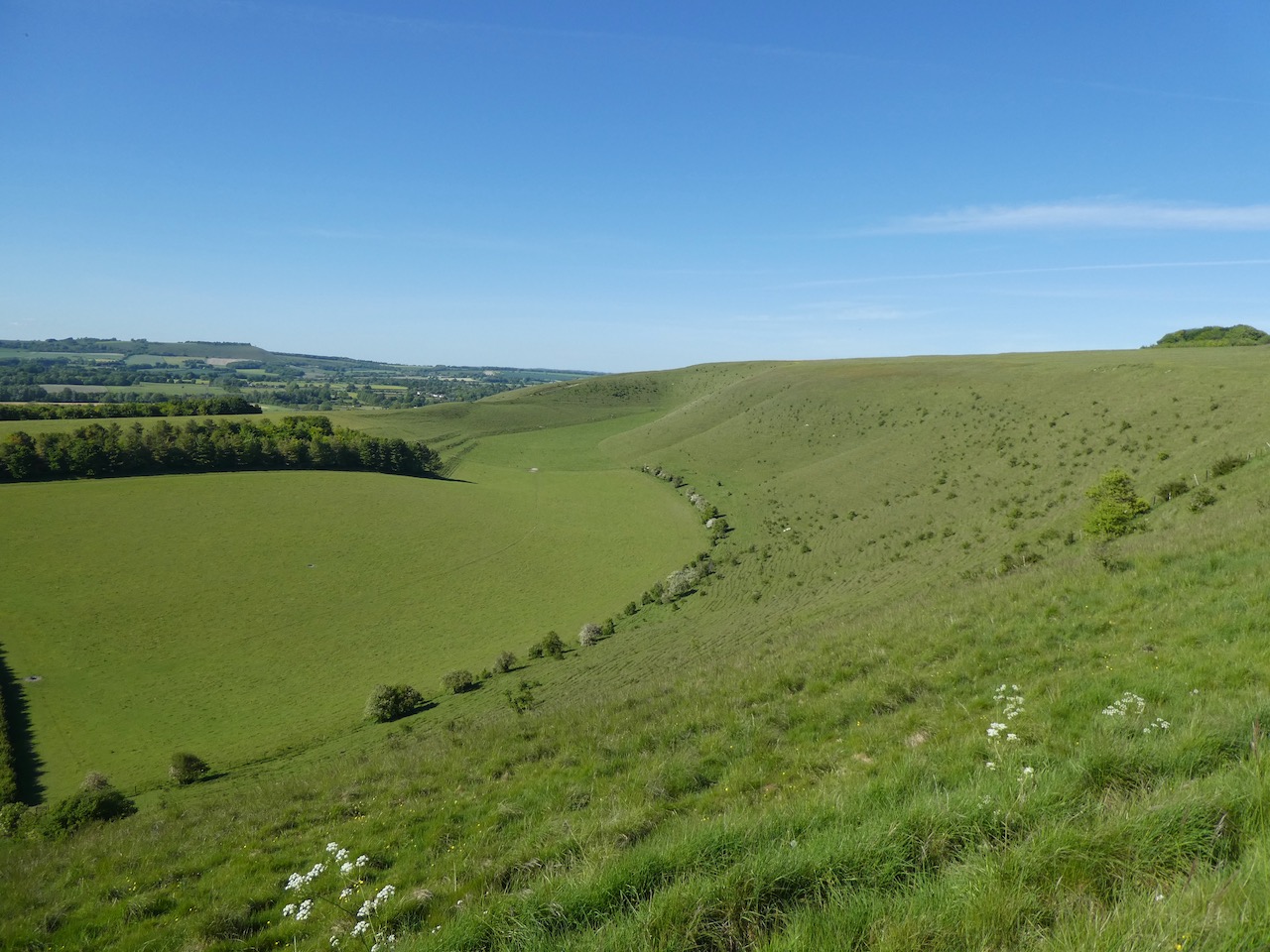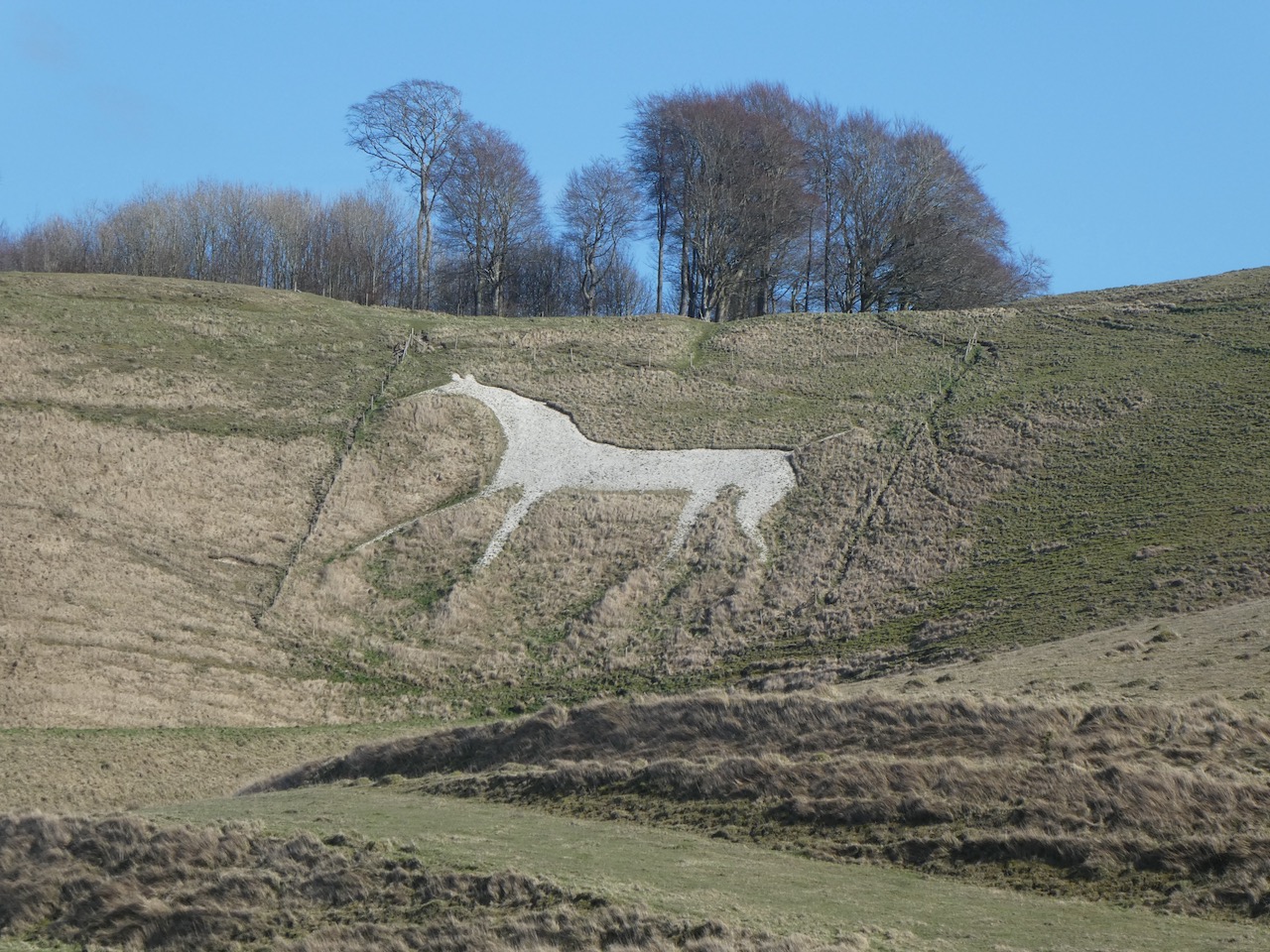It is the last full day of our stay at Charlton St Peter so we are making the most of it by walking in the Vale of Pewsey and taking in a few historic locations. It is only a short drive from the site to the village of Burbage.
Our walk starts from a parking area in East Sands Lane besides the village cricket club pitch (Grid Ref: SU 237 611). To start we walk a few yards along the track and then opposite the gate to the cricket ground we take a footpath on the right which heads in a southerly direction towards the A338. Initially the path goes along the edge of trees and then crosses a field before heading to the main road.

On reaching the road we turn left and walk a few yards along the wide verge until we reach a footpath on the right, we cross the road with care and follow the path along the edge of a field.

At two junctions on the path we keep left until we reach a minor road. We turn left down the road towards West Grafton and soon pass an electricity sub-station on the right. Shortly after we take a footpath on the right signposted to East Grafton.

The path now crosses fields heading towards Manor Farm and then goes through a paddock and besides a spinney to reach East Grafton.

We emerge in the village almost opposite St Nicholas’ Church. It is a warm day so we stop at the bench by the church gate for a drink and then wander in to look at the fine church.

This relatively modern church opened in 1844 following a campaign for a church in the village. Apparently the Marquess of Aylesbury was persuaded to give sufficient land to build a Church, parsonage and school. The style of the design is Romanesque and apparently it has a fine interior, but unfortunately the door is locked so we are unable to see for ourselves. Instead we content ourselves with looking at the elaborate stonework around the main door.

From the church we briefly head south along the road and then take a lane on the left which runs besides the edge of the churchyard to reach paddocks. We go through the paddocks using the stiles and then follow the footpath across arable fields with a view of Wilton Windmill away to our left.

The footpath reaches a track where we turn right and head south towards electricity pylons. At a junction on the track we turn left and follow the tree lined path as it heads steadily uphill through shrubland and then crosses an arable field to reach a reservoir with a fine brick structure besides it.

The Historic England website says this is a pumphouse for the reservoir that served nearby Wexcombe, however, I have read elsewhere that it was a folly built by William Finch in 1899 and contains two water taps. Apparently Finch was the person who installed the water supply for the hamlet.

We reach a road besides the reservoir and cross to go over a stile into an arable field following the route of the footpath as marked on the map. This shows that we should go through woodland to reach Wexcombe. When we reach the far side of the field at the point the path should enter the woodland it is thick with brambles and no sign of any footpath. After a bit of a curse we follow the fence line to the south to reach a wide gap in the hedge. Here we turn left and follow the field margin down to the edge of Wexcombe where we turn right on a chalk track.

This track initially goes steadily uphill but on reaching the escarpment of Wexcombe Down it becomes a steep ascent to tackle on a hot afternoon.

The benefit of walking up steep chalk hills is that you know there is bound to be a cracking view and this one along the northern edge of Wexcombe Down certainly lives up to expectation.

It is a relief for both of us when the path levels out and continues heading south with expansive views. Soon on our left is an Ordnance Survey trig pillar and I make a brief diversion from the track to visit it. This is the 253rd trig I have bagged.

Back on the track we continue heading south and soon pass a concrete water tower.

Shortly after the tower at a junction of tracks we take a footpath on the left which leads across an arable field heading towards Tidcombe.

After crossing one field the path joins a track going between fields and continues on to a junction of tracks on the edge of the access land of Tidcombe Down. We carry straight on along the track as it descends into Tidcombe. On reaching St Michael’s Church we pop in to have a look around.

There are parts of this church dating from the 14th century and the tower was added in the 17th century. Inside I am taken by the font, usually they are elaborate but this one is very basic and apparently dates back to Saxon times.

From the church we go north through the village and just after passing The Manor take a footpath on the left which passes woodland and then goes along the edge of fields heading towards Marten.

Nearing Marten we reach Manor Farm and follow a diversion of the path as it follows around the margins of a wildlife area to reach a minor road.

On the road we turn right and walk a short distance to a junction where we turn left and walk along the road through Marten. It is a very warm day for walking and I encourage Lynnie by promising there will be an ice cream van around the corner. This is a regular promise on a walk and Lynnie knows there is little chance of it coming true. However, to my surprise and Lynnie’s delight we reach Pickneys Farm and there is a small shop selling refreshments and ice creams!

After we have both had an ice cream and Crosby has topped up with water we resume our walk down the road to reach a junction with the A338 where we turn left and pass the former Nags Head pub which has been converted into a private house. Apparently a pub first opened on this site in 1724 and was rebuilt in 1902. It is a pity to see pubs close, but I imagine trying to run a business here was very difficult.
We are only on the A338 for a short distance, immediately after passing the former pub we turn right onto a lane heading towards Wilton. Soon to our right there are good views of the Wilton Windmill. Apparently this is the only remaining operating windmill in Wiltshire. It was built in 1821 to replace local mills that had been lost when the Kennet and Avon Canal cut through nearby water meadows. It was used for 100 years until it was abandoned and fell into disrepair. After a restoration project it fully reopened in 1976 and now welcomes visitors.

At a junction we go straight over to join a track with a finger post pointing to Crofton Beam Engine. As the track starts to descend we climb the bank on the left to get a good view of the Beam Engine. This is a remarkable industrial site which we visited many years ago when our children were small. It was built in 1807-09 and was used to pump water to the highest point on the Kennet and Avon Canal.

The building houses a 1812 Boulton & Watt steam powered beam engine which is the oldest working beam engine in the world that is still in its original location. It survives thanks to the efforts of the Kennet and Avon Canal Trust which purchased the derelict site in 1968 and by 1971 it was fully restored and operating. Despite it being over thirty years since I visited I can still recall the magic of watching this piece of industrial heritage working.
We continue down the track to reach the Kennet and Avon Canal and turn left onto the towpath to pass a lock. We soon reach Wilton Water the reservoir from where water is pumped by the Crofton Beam Engine to top up the canal.

The beam engine sits on the far side of the canal and we pass it and continue along the towpath heading west, soon passing Crofton Bridge and the Sam Farmer Lock.

This is a tranquil stretch of the canal and even though it is a sunny Saturday afternoon in June we see very few people as we continue to head west. Soon we pass the parapets of the disused Andover to Marlborough railway line that crossed the canal until the line was closed in 1970.

A short distance after we reach Wolfhall Bridge and leave the canal, turning left to follow a track going steadily uphill to Wolfhall Farm.

At Wolfhall Farm we turn right along the minor road in front of Wolfhall Manor. This house has a long history dating back to the 11th century and it was here in the 16th century that the then owner Sir John Seymour invited King Henry VIII to stay in 1535. A year later Seymour’s daughter Jane became Henry’s third wife, just a year later she died in childbirth.
The building has had many additions over the years and is a combination of Tudor, Georgian and Victorian architecture. Apparently, it has one of the best preserved Tudor sewers in Britain. Walking by this interesting house there is no sign of its historical significance.

Reaching a footpath on the left we leave the road and head south besides a field to reach a five way junction of paths, we continue along a made-up track opposite, passing cottages and then reaching the starting point of our walk at the edge of a playing field on the outskirts of Burbage.
Our walk has covered just over twelve miles in a cracking part of the Vale of Pewsey which is packed with historical sites. Now we must get back to Charlton Manor CL and start our preparations for our return home tomorrow.
You can view this 12 mile walk on OS Maps and download the GPX File Here
To follow my walk, you will need Ordnance Survey Maps: OS Explorer Active – 157 – Marlborough & Savernake Forest; OS Explorer Active – 131 – Romsey, Andover & Test Valley & OS Explorer Active – 158 – Newbury & Hungerford
12th June 2021
© Two Dogs and an Awning (2021)
All information on this site is provided free of charge and in good faith and no liability is accepted in respect of damage, loss or injury which might result from it. To the best of my knowledge the routes are entirely on public rights of way or within areas that are open for public access.
Walking can be hazardous and is done entirely at your own risk. It is your responsibility to check your route and navigate using a map and compass.
